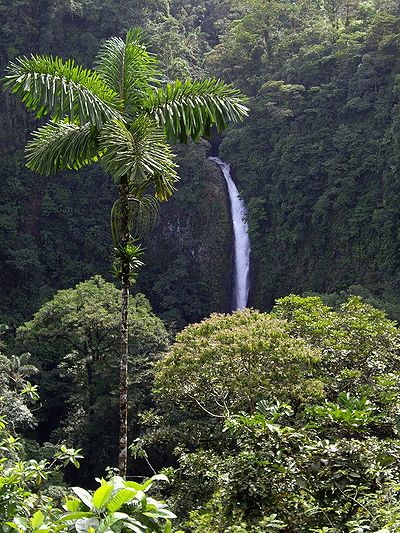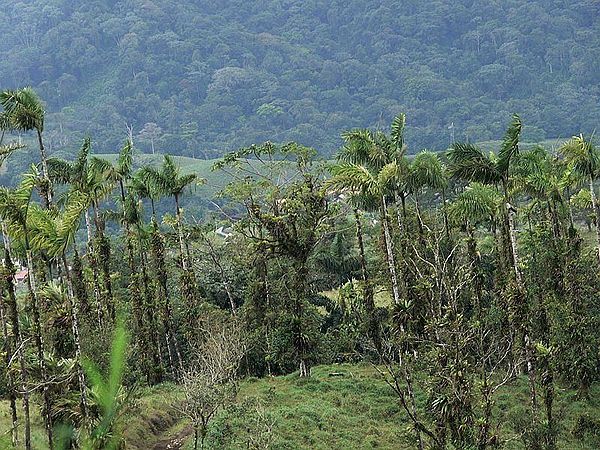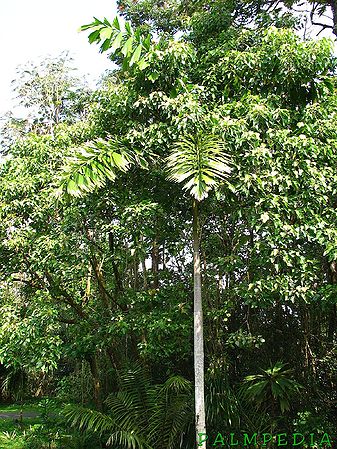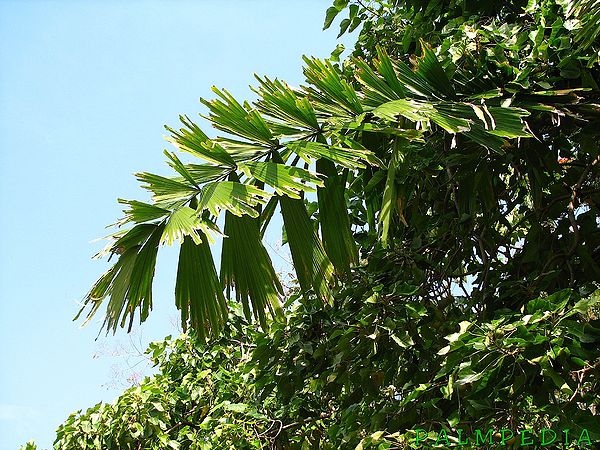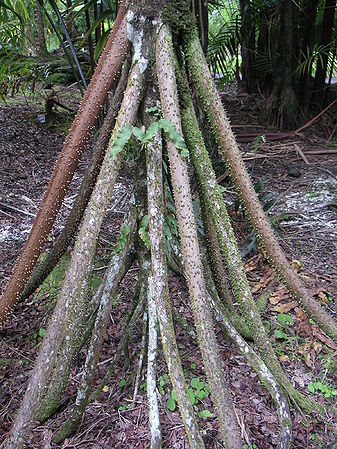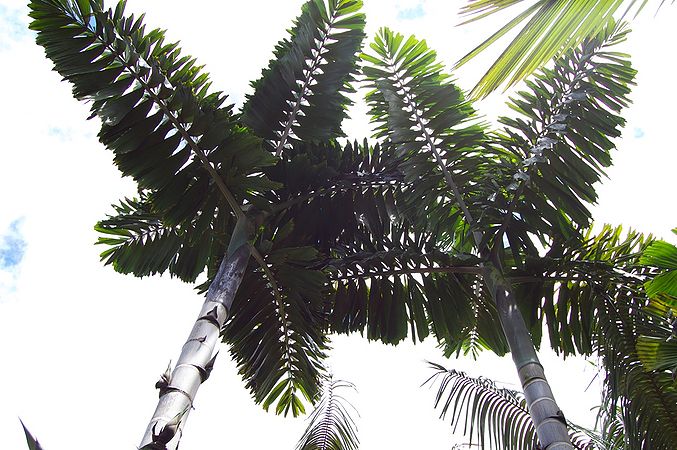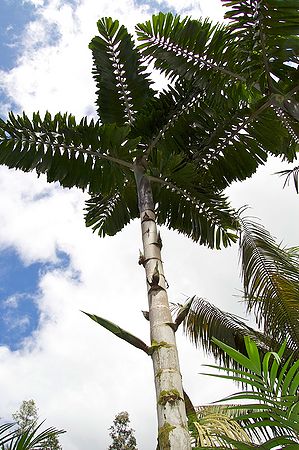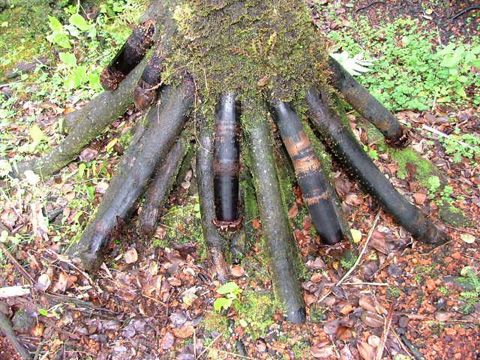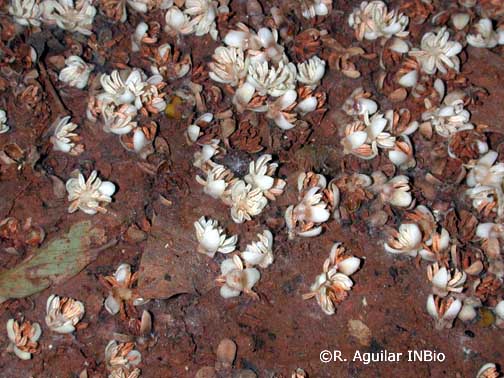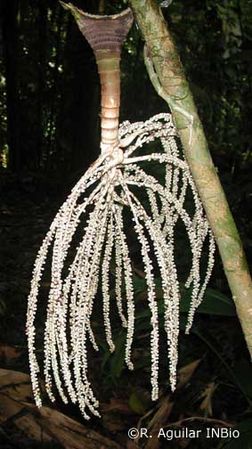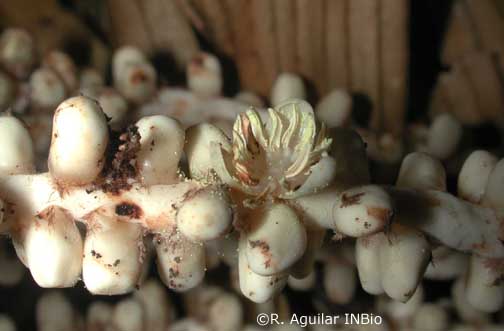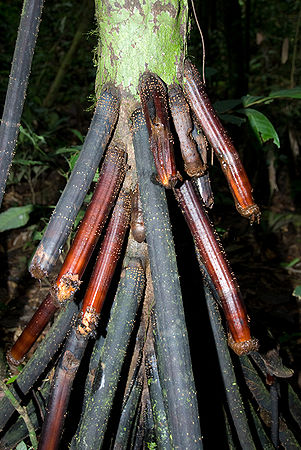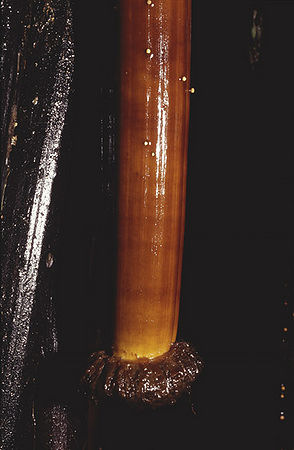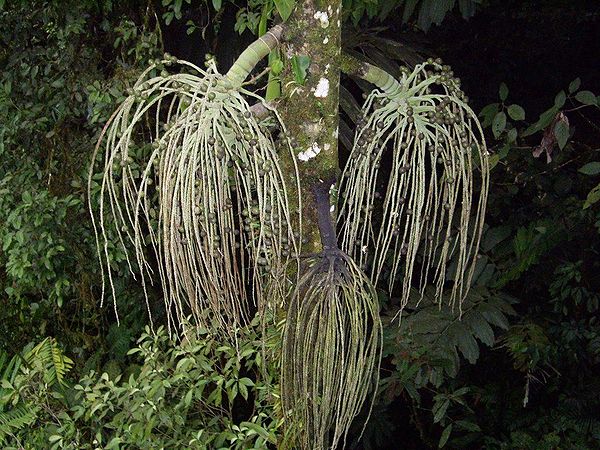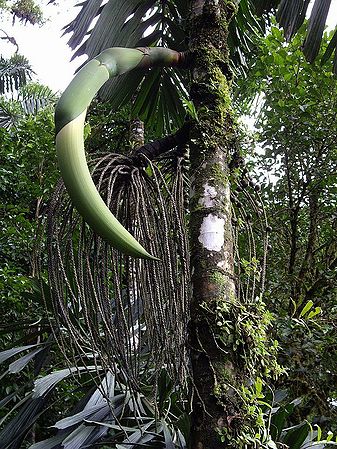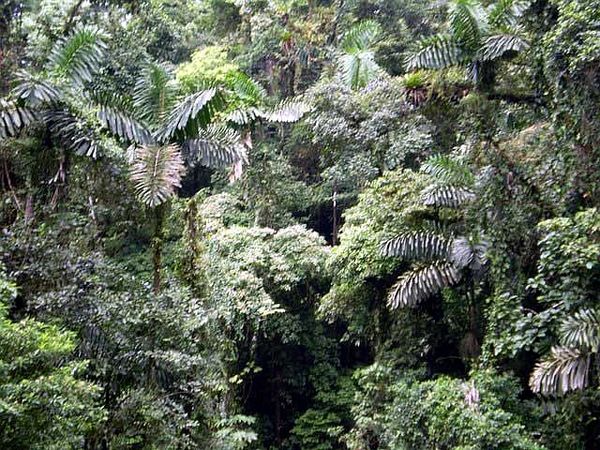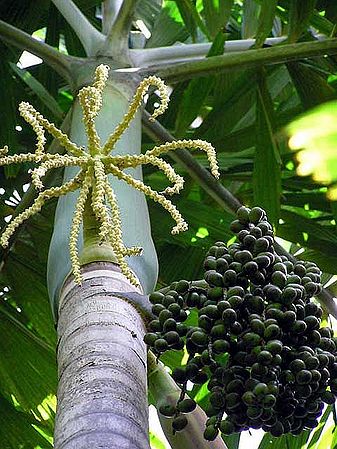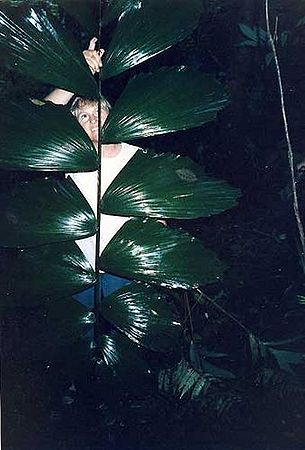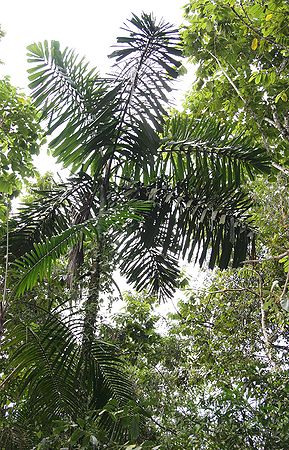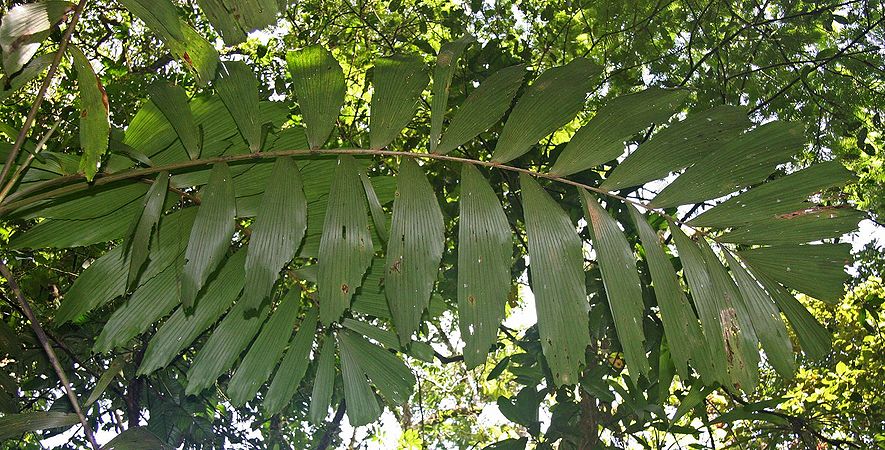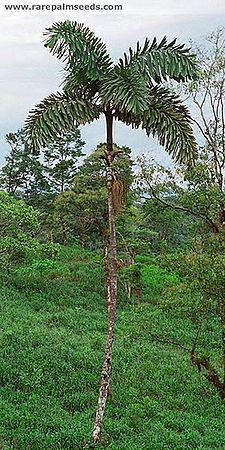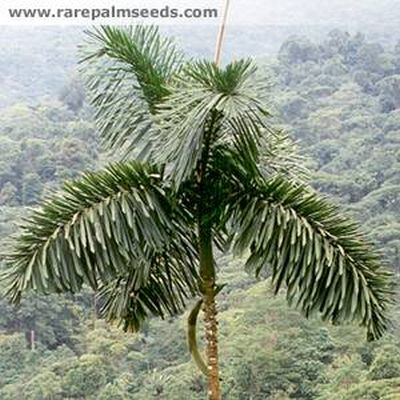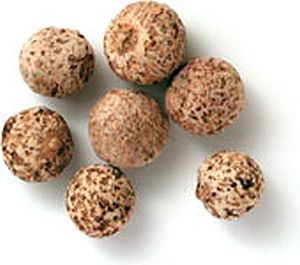Difference between revisions of "Iriartea deltoidea"
| Line 46: | Line 46: | ||
{{read more bottom}} | {{read more bottom}} | ||
==Culture== | ==Culture== | ||
| − | + | Iriartea deltoidea can tolerate close to freezing conditions. But low temperatures are best avoided. It naturally occurs in wet rainforest or seasonally wet forest in low montane locations. In this type of natural environment temperature fluctuations are slight, and this palm prefers a constantly cool or mild climate with little temperature difference between day & night, and Summer & Winter. Under extreme cold conditions we recommend you keep this palm as dry as possible, and well wrapped up. Cold Hardiness Zone: 10a | |
==Comments and Curiosities== | ==Comments and Curiosities== | ||
{{read more top}} | {{read more top}} | ||
| Line 56: | Line 56: | ||
Uses: The outer part of the stems are used throughout its range for building purposes, e.g., floors, posts, poles; also for blowguns, bows, harpoons and arrow points; and also for firewood. The leaves are used for thatching and basketry. The heart and seeds are occasionally eaten. The inside layer of the leaf sheath is used to give women strength in labor (Shemluck & Ness 163, Ecuador). Hollowed-out stems are used as coffins by Embera Indians in Colombia (R. Bernal, pers. comm.). Steven King (pers. comm.) reports that in northern Peru Angotere-Secoya and Quechua people use the stems of I. deltoidea as canoes. Large specimens are selected and carefully felled. The soft central ground tissue is removed from the center of the stem, and base and apex fashioned into bow and stern. The canoes are widely used for shortening trips, especially long overland trips where short-cuts can be made by river. Canoes last about two or three months. Such is the demand for these temporary canoes that many of the larger specimens of Iriartea have been felled in this area. Rodrigo Bernal (pers. comm.) reports that in Colombia the Embera Indians of the Choco tie the stems together and use them as rafts. Since these are so heavy they are only used for downstream travel. (Henderson, A. 1990)/Palmweb. | Uses: The outer part of the stems are used throughout its range for building purposes, e.g., floors, posts, poles; also for blowguns, bows, harpoons and arrow points; and also for firewood. The leaves are used for thatching and basketry. The heart and seeds are occasionally eaten. The inside layer of the leaf sheath is used to give women strength in labor (Shemluck & Ness 163, Ecuador). Hollowed-out stems are used as coffins by Embera Indians in Colombia (R. Bernal, pers. comm.). Steven King (pers. comm.) reports that in northern Peru Angotere-Secoya and Quechua people use the stems of I. deltoidea as canoes. Large specimens are selected and carefully felled. The soft central ground tissue is removed from the center of the stem, and base and apex fashioned into bow and stern. The canoes are widely used for shortening trips, especially long overland trips where short-cuts can be made by river. Canoes last about two or three months. Such is the demand for these temporary canoes that many of the larger specimens of Iriartea have been felled in this area. Rodrigo Bernal (pers. comm.) reports that in Colombia the Embera Indians of the Choco tie the stems together and use them as rafts. Since these are so heavy they are only used for downstream travel. (Henderson, A. 1990)/Palmweb. | ||
| + | |||
| + | This palm grows naturally in the understory forest until they reach a mature height. Many specimens were found growing along creeks and slopes. | ||
For many enthusiasts, Iriartea is the grandest of the many stunning palms of South America. This tall and elegant plant has a slightly swollen, gray or white trunk; plumose leaves with leaflets very neatly arranged in four planes; and giant, horn-shaped inflorescence-bracts, which easily identify it. Common in its native home, it is little known in cultivation and should be much more widely grown. For warm subtropical and tropical areas. (RPS.com) | For many enthusiasts, Iriartea is the grandest of the many stunning palms of South America. This tall and elegant plant has a slightly swollen, gray or white trunk; plumose leaves with leaflets very neatly arranged in four planes; and giant, horn-shaped inflorescence-bracts, which easily identify it. Common in its native home, it is little known in cultivation and should be much more widely grown. For warm subtropical and tropical areas. (RPS.com) | ||
Revision as of 00:43, 5 August 2015
| Iriartea (ihr-ee-ahr-TEH-ah) deltoidea (del-toh-ee-DEH-ah) | ||||||||
|---|---|---|---|---|---|---|---|---|
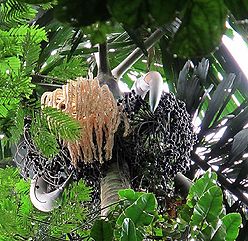 Costa Rica. Iriartea in bud, flower, and fruit. The downward curved “bulls horn” bud is diagnostic of the species. | ||||||||
| Scientific Classification | ||||||||
| ||||||||
| Synonyms | ||||||||
|
| ||||||||
| Native Continent | ||||||||
|
| ||||||||
| Morphology | ||||||||
| ||||||||
| Culture | ||||||||
| ||||||||
| Survivability index | ||||||||
|
| ||||||||
| Common names | ||||||||
|
| ||||||||
Contents
Habitat and Distribution
This palm extends from Nicaragua to Panama, and in other places in South America as Colombia, Ecuador, Peru, Venezuela and Brazil.
Bolivia, Brazil North, Colombia, Costa Rica, Ecuador, Nicaragua, Panamá, Peru, and Venezuela. Central America to Ecuador W of the Andes, and in the W part of the Amazon region from Venezuela to Bolivia. Perhaps the most common native tree species in Ecuador, occurring in all provinces that include moist lowland areas.
Description
A slow growing palm up to 98 ft./30 m. The trunks are grey, smooth and sometimes are loaded with epiphytes (bromeliads, orchids, ferns). The infrafoliar inflorescence is yellow or cream colored and comes out from a big green spathe with horn-like structure. The fruits are globose and green colored. The black stilt roots can reach 1 meter or less.
Canopy palm. Stem to 20 m tall and 20-40 cm in diameter, often swollen in the middle. Base supported by a 1-2 m tall cone of black stilt roots, these 3-5 cm in diameter. Leaves 4-6, 3-5 m long, bushy; pinnae numerous, longitudinally split, spreading in different planes, green on both sides. Inflorescence buds 1-3 m long, downwards curved, resembling a bulls horn. Inflorescence cream coloured in flower, the numerous pendulous branches to 1.5 m long, borne on a short curved axis. Fruits dull bluish black, globose, about 3 cm in diameter. (Borchsenius, F. 1998)/Palmweb. Editing by edric.
Stem more or less ventricose, to 25 m tall, 10-30 cm in diam. at base, 12-70 cm in diam. at swelling, 11-23 cm in diam. at apex, gray, smooth, with nodes obscure and internodes to 30 cm long; stilt roots to 100, terete, nearly vertical, closely spaced and forming a dense cone, branched at or below ground level, to 2 m x 3.5 cm, black, with sharp spines. Leaves 4-7, stiffly spreading; sheath forming a crownshaft, 60-150 cm long, glaucous, green, outer surface with brown or white scales; petiole terete, 2-13 x 3 cm (to 40 cm long when including narrow, apical, petiolar part of sheath), green, densely brown-tomentose; rachis ridged adaxially, rounded abaxially, 2-4.3 m long, densely whitish-tomentose abaxially, densely whitish-brown-tomentose adaxially; pinnae 15-27 per side of rachis, alternate, stiff, coriaceous, deltate with praemorse distal margins, lustrous green glabrous above, green glabrous below except for dense brown villi at base and on veins or occasionally villous overall, occasionally below with lines about 3 mm wide of dense white or brown tomentum running parallel to veins, the middle pinnae split to the base into numerous segments, the proximal one of a pinna largest and pendulous and all the distal ones smaller and pointing up and away from the axis and giving the leaf a two-ranked appearance (juvenile plants with entire pinnae); proximal pinna entire, 6-28 cm long, 0.5-8 cm wide at mid-point, erect; middle pinnae split into as many as 18 segments, the proximal one 50-98 (-122) cm long and 3-8 (-47) cm wide at mid-point and the distal one 19-34 cm long and 1-2.5 cm wide at mid-point; apical pinna entire, flabellate, 35-38 cm long, 17 cm wide at mid-point. Inflorescence pendulous at anthesis, to 2 m long, buds developing below crownshaft and erect at first, soon becoming de-curved and eventually horn-shaped; peduncle terete, curved, 20-44 cm long, half-encircling stem and then abruptly narrowing to 2-6 cm in diam., densely brown-velvety-tomentose, at anthesis with up to 16 bract scars; prophyll inserted at base of peduncle, triangular, bicarinate, 8 cm long, 7 cm wide at base, early caducous; peduncular bracts to 15, caducous as bud elongates, terete, with acute apex, splitting abaxially, the first about six similar to and only slightly longer than the prophyll, the remaining about nine longer, terete, horn-shaped eventually up to 120 cm long, sometimes an incomplete bract of variable size present; prophyll and peduncular bracts tomen-tose on the outside like the peduncle; rachis 14-46 cm long, of same diam. as peduncle at base and tapering into distal rachillae; rachillae 23-37, all simple or more often the proximal few bifurcate, at base with 3-6 cm swollen, flattened, sterile section, ± equal in length, 80-140 cm long, 5-8 mm in diam. at mid-point, subtended by a vestigial bract, glabrous; triads in as many as seven spirally arranged series, 2-6 mm apart, vestigially bracteate;flowers proximally in triads (rarely tetrads with two pistillate), distally sta-minate in pairs or solitary, or often all in an inflorescence staminate, yellowish at anthesis; staminate flowers up to 7 mm long; sepals depressed-ovate, imbricate, very briefly connate below, 2.5-3 x 2-4 mm, fleshy, gibbous, covered with long, stiff, caducous hairs; petals ovate-oblong, valvate, 7 x 3 mm; stamens (10-) 12-15 (-17); filaments triangular, 0.5 mm long; anthers linear, latrorse, sub-basifixed, 4-5 mm long; pistillode minute or absent; pollen with intectate, clavate exine; pistillate flowers 4 mm long; sepals fleshy, imbricate, 4-5 x 5 mm, ciliate; petals imbricate below, valvate above, fleshy, 4-5 x 5 mm; staminodes 10-13, adnate to base of petals, 1.5-2 mm long, apiculate; ovary 3-5 mm long, triangular in cross-section, 3-locular; stigmas sessile, triangular, 1 mm long, 1 mm in diam. at base, erect at anthesis; fruit globose, 2-2.7 x 2.4-2.8 cm including persistent expanded perianth; stigmatic residue sub-apical to apical; epicarp glabrous, greenish-yellow at maturity and splitting irregularly from apex; mesocarp whitish, granular, fibrous; endocarp papery; seed globose, 1.5 cm in diam., basally attached; raphe branches anastomosing; hilum rounded; embryo sub-apical to lateral; eophyll entire. (Henderson, A. 1990)/Palmweb.
| read more |
|---|
|
The holotype of Iriartea deltoidea consists of five sheets with a seedling, section of leaf, and piece of rachilla with pistillate flowers. The iso type is similar. This species is interpreted from the type, description, and a more recent collection from the type locality (Henderson 537). The type of Deckeria corneto consists of four sheets, with a leaf section and rachillae with sta-minate and pistillate flowers. This species is interpreted from the type, description, and other collections from at or near the type locality (Henderson et al. 119, Triana 1733-2, Dugand &Ja-ramillo 2921, Moore & Dietz 9865). Karsten described the species as having 16-20 stamens. The type has 15 stamens, and Henderson et al. 119 has 13-14. Karsten's count is considered incorrect, and D. corneto is not maintained. The type of Iriartea ventricosa consists of a single sheet with a leaf section only. Dugand (1942) believed that the type locality could be in present-day Colombia. This species is interpreted from the type and the description. Martius distinguished his new species on its ventricose stem, pinna shape, and villose staminate calyx. The character of the stem swelling is of no significance. It is usual in Iriartea for lowland populations below ca. 300 m to have markedly swollen stems, and for upland populations to have more or less cylindrical stems. However, there are many exceptions in any population, and the character is physiological, and not of any taxo-nomic significance. The characters of the pinna shape and calyx trichomes are of little importance. All Iriartea specimens examined with young staminate flowers have villose sepals, but these trichomes soon fall from the sepals. The type of Iriartea phaeocarpa consists of a seedling only, which is illustrated in Martius (1847). This species is interpreted from the type, the description, from Martius (1847), and more recent collections from near the type locality (Nee & Solomon 30325). Martius recognized that this species was similar to I. ventricosa, but distinguished it by its few peduncular bracts, pinnae size, and fruit size. The number of peduncular bracts, three, is obviously based on a misinterpretation, probably most had fallen when the illustration was made. The illustration is, in any case, incomplete (Burret, 1930). Pinnae shape and fruit size are not considered significant. The type of Iriartea gigantea consists of leaf sections and rachillae with staminate and pistillate flowers. This species is interpreted from the type, the description, and from recent collections from at or near the type locality (Moore 6574, Moore & Parthasarathy 9413, Tomlinson 65B, Henderson 42). Burret distinguished his new species by its thicker rachillae with seven series of triads, and by its longer fruit. These differences are slight and are not considered significant. The type of Iriartea weberbaueri consists of approximately 30 fruits. This species is interpreted from the type and the description. Burret distinguished the species by its larger fruits and cylindrical stern. The type fruits are 2-2.5 x 2.2-2.5 cm, and easily fall within the range observed in other specimens. As discussed above, the character of the stem swelling is of no taxonomic significance. The type of Iriartea megalocarpa is no longer extant at B, and no isotypes are known. A recent collection from the type locality, the neotype, is typical Iriartea deltoidea. (Henderson, A. 1990)/Palmweb. |
Culture
Iriartea deltoidea can tolerate close to freezing conditions. But low temperatures are best avoided. It naturally occurs in wet rainforest or seasonally wet forest in low montane locations. In this type of natural environment temperature fluctuations are slight, and this palm prefers a constantly cool or mild climate with little temperature difference between day & night, and Summer & Winter. Under extreme cold conditions we recommend you keep this palm as dry as possible, and well wrapped up. Cold Hardiness Zone: 10a
Comments and Curiosities
| read more |
|---|
|
This is considered a monotypic genus, edric. Etymology: Genus name honors the 18th century Spanish patron of learning, Bernardo de Yriarte. The specific epithet Means triangle or delta shaped and refers to the leaflet shape. Uses: Animals as toucans, tapirs, monkeys, pigs and rodents eat the fruits. Uses: The outer part of the stems are used throughout its range for building purposes, e.g., floors, posts, poles; also for blowguns, bows, harpoons and arrow points; and also for firewood. The leaves are used for thatching and basketry. The heart and seeds are occasionally eaten. The inside layer of the leaf sheath is used to give women strength in labor (Shemluck & Ness 163, Ecuador). Hollowed-out stems are used as coffins by Embera Indians in Colombia (R. Bernal, pers. comm.). Steven King (pers. comm.) reports that in northern Peru Angotere-Secoya and Quechua people use the stems of I. deltoidea as canoes. Large specimens are selected and carefully felled. The soft central ground tissue is removed from the center of the stem, and base and apex fashioned into bow and stern. The canoes are widely used for shortening trips, especially long overland trips where short-cuts can be made by river. Canoes last about two or three months. Such is the demand for these temporary canoes that many of the larger specimens of Iriartea have been felled in this area. Rodrigo Bernal (pers. comm.) reports that in Colombia the Embera Indians of the Choco tie the stems together and use them as rafts. Since these are so heavy they are only used for downstream travel. (Henderson, A. 1990)/Palmweb. This palm grows naturally in the understory forest until they reach a mature height. Many specimens were found growing along creeks and slopes. For many enthusiasts, Iriartea is the grandest of the many stunning palms of South America. This tall and elegant plant has a slightly swollen, gray or white trunk; plumose leaves with leaflets very neatly arranged in four planes; and giant, horn-shaped inflorescence-bracts, which easily identify it. Common in its native home, it is little known in cultivation and should be much more widely grown. For warm subtropical and tropical areas. (RPS.com) |
- IMAGE GALLERY
External Links
References
Phonetic spelling of Latin names by edric.
Special thanks to Geoff Stein, (Palmbob) for his hundreds of photos.
Special thanks to Palmweb.org, Dr. John Dransfield, Dr. Bill Baker & team, for their volumes of information and photos.
Glossary of Palm Terms; Based on the glossary in Dransfield, J., N.W. Uhl, C.B. Asmussen-Lange, W.J. Baker, M.M. Harley & C.E. Lewis. 2008. Genera Palmarum - Evolution and Classification of the Palms. Royal Botanic Gardens, Kew. All images copyright of the artists and photographers (see images for credits).
Borchsenius, F.1998. Manual to the palms of Ecuador. AAU Reports 37. Department of Systematic Botany, University of Aarhus, Denmark in collaboration with Pontificia Universidad Catalica del Ecuador.
Henderson, A. 1990. Introduction and the Iriarteinae.
Many Special Thanks to Ed Vaile for his long hours of tireless editing and numerous contributions.

